
Easter & Passover
by Milan Riley and Ava-Ray Pributsky
Easter
Easter is a Christian festival and holiday celebrating the resurrection of Jesus, the religion’s prophet. Easter is considered a “movable feast,” meaning it doesn’t occur on the same day every year. However, it is always observed between March 22 and April 25. In 2022, Easter occurred on Sunday, April 17.
Origin
Jesus Christ was a Jewish preacher and religious leader whose teachings started Christianity. Scholars estimate Jesus died between AD 30 and AD 36. According to the New Testament, Jesus died from crucifixion by the Romans in Golgotha, a place close to Jerusalem. Christians believe Jesus resurrected three days after he died on the cross. It is thought that Jesus died on Friday, now celebrated as Good Friday, and was resurrected, or returned to life, on Sunday, now celebrated as Easter.
Though Christians most likely commemorated this day earlier, the first recorded observance of Easter was in the mid-2nd century. Early Christians called this event the festival of Pascha.
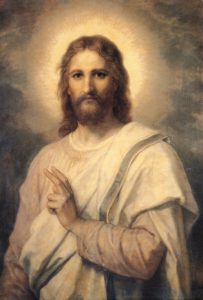
One of many depictions of Jesus Christ
Traditions
One common tradition of Easter is a feast. In addition, many individuals color and hide eggs for an egg hunt or give away baskets. This is because the egg symbolizes life; therefore, it has become a well-known symbol of Easter and Jesus’ resurrection that opposed death.
Practicing Christians go to church for Sunday worship as usual on Easter. Families listen to Easter music and share a special meal for the holy day.
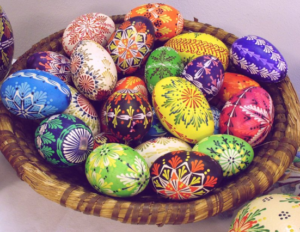
Decorated eggs for Easter activities
Passover
Passover, or Pesach, is a Jewish holiday that celebrates the story of how the Israelites escaped Egypt. This holiday is celebrated once a year and lasts for seven days. On Passover, families will hold a special meal called a seder. In English, “seder” means order. Each food that is served at the seder symbolizes a certain aspect of the holiday. At the seder, families recite prayers and blessings from the Haggadah, the book of the Exodus.

The Seder Plate
The Story of Passover
Passover is the story of the Israelites and how they escaped slavery. The story begins around 1200 B.C, when the Pharaoh, the ruler of Egypt, worries that the Jews will outnumber the Egyptians. He forces them into slavery and commands every Jewish boy born to be drowned in the Nile. One baby, Moses, is cast into the Nila, saved and adopted by Pharaoh’s daughter. When Moses gets older, he is told by God to command the Pharaoh to free the Jewish people. As a way to convince the Pharaoh, God sends to Egypt a set of Ten Plagues.
These plagues include the Nile turning to blood, frogs covering the land, the dust turning to gnats, and flies filling the houses and land. Every time one of the plagues would rain down upon Egypt, the Pharaoh would promise to free the Israelites, but every time God took the plague away, Pharaoh would change his mind again.
During the tenth and final plague, Pharaoh decides to finally free the Jews. While they are running away, however, he changes his mind, resulting in a wild chase involving the parting of the Red Sea and the drowning of the persuing Egyptian soldiers; eventually, the Jews return to the sacred land of Israel.
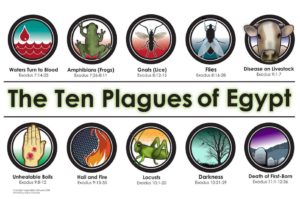
The Passover Seder
During the Passover Seder, we set out different foods that symbolize different parts of the Exodus. Five foods are placed on the table: shank bone, egg, bitter herbs, parsley in saltwater, haroset (or charoset, which is a mixture of apples, raisins, walnuts, cinnamon, sugar, and wine), and matzah. The shank bone represents the tenth plague on Egypt when all the firstborn Egyptian sons were killed. The egg represents the cycle of rebirth and renewal, and the cracked shell represents sacrificial offerings. The bitter herbs represent the bitter suffering of the Israelites while in slavery. The parsley in salt water represents all of the tears and pain that the Israelites experienced in Egypt. The haroset, or charoset, represents the mortar and brick used by Israelite slaves to build the pyramids and other buildings. The matzah represents how the Israelites did not have time to leaven their bread as they were escaping Egypt, so they had flat unleavened bread.
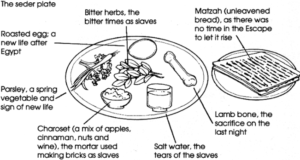
My Family’s Traditions
During Passover, my family likes to get together and have a huge seder. We sit together and connect, and we cook together. Some of the food that we eat during Passover include gefilte fish, matzah ball soup, matzah brei, and brisket. After we eat, the adults hide the afikomen. The afikomen is the middle piece of matzah that you hide, and if the children find it then they get a prize. I always find the afikomen because my parents always hide it in the same three places. My father always tells the story of how my grandfather would hide the afikomen in the strangest places. One time he hid it in the VCR!
Read More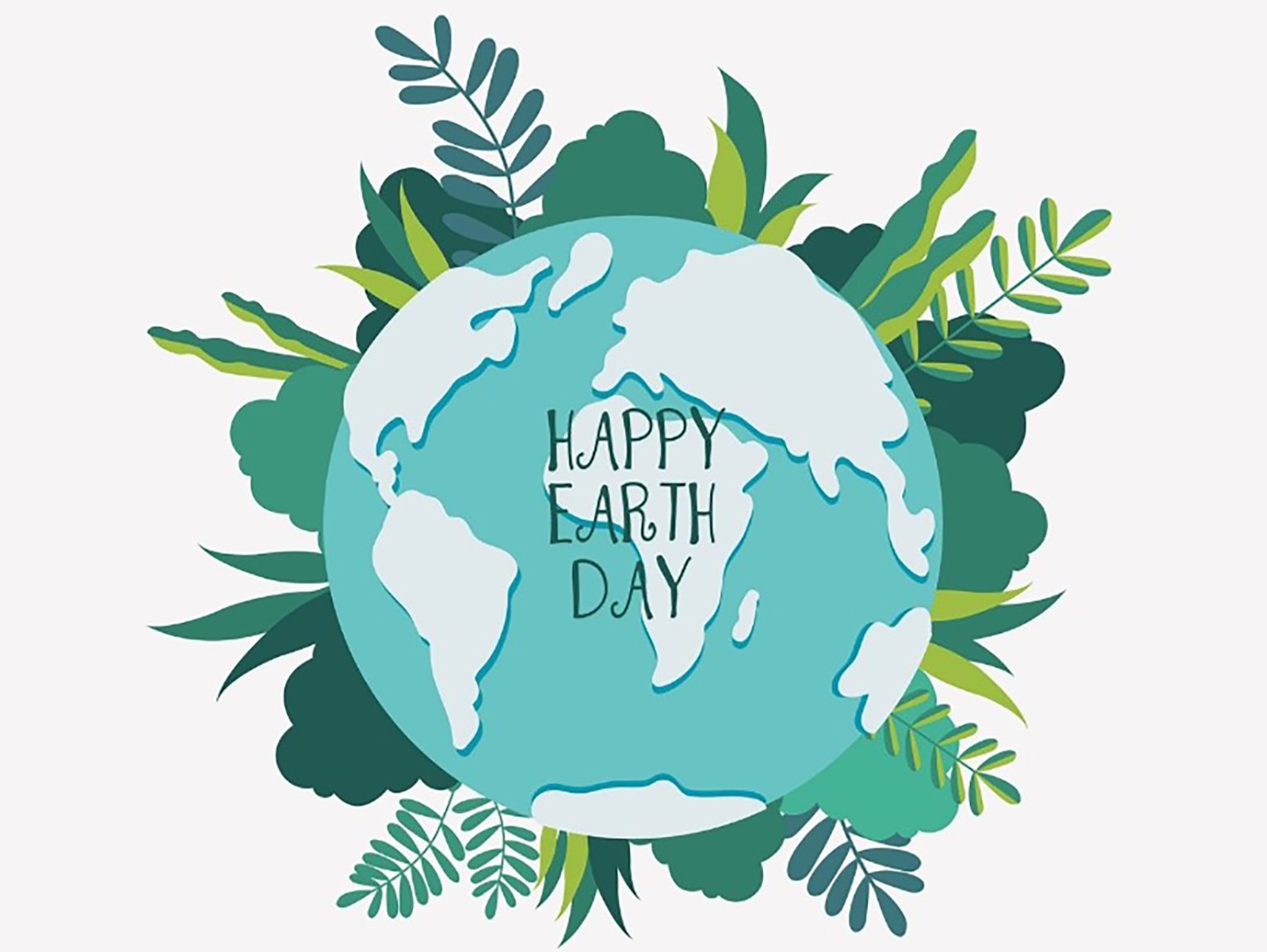
Earth Day
Friday – April 22, 2022
By Jordin Lim

Earth Day is a yearly celebration during which support for environmental protection is displayed through a wide range of events that are coordinated globally. Earth Day also marks the anniversary of the birth of the modern environmental movement in 1970. During Earth Day, awareness is raised about pollution and environmental issues as well as ways to maintain a clean environment.
How did this important commemoration come to be?
The first Earth Day was in April 1970. Before this time, there were no legal or regulatory procedures to protect our environment; there was no EPA, no Clean Air Act, and no Clean Water Act.
- EPA: Environmental Protection Agency
- Clean Air Act: requires the EPA to set national emission standards for large or worldwide sources of air
- Clean Water Act: prevents, reduces, and eliminates pollution in nation’s water
 In the spring of 1970, Wisconsin senator Gaylord Nelson organized the first Earth Day and rallies by 20 million Americans in various U.S. cities raising awareness about environmental issues took place across the country. This movement was successful and by December of 1970, the U.S. government had created the Environmental Protection Agency (EPA). By 1990, Earth Day was an event celebrated by more than 140 countries around the globe.
In the spring of 1970, Wisconsin senator Gaylord Nelson organized the first Earth Day and rallies by 20 million Americans in various U.S. cities raising awareness about environmental issues took place across the country. This movement was successful and by December of 1970, the U.S. government had created the Environmental Protection Agency (EPA). By 1990, Earth Day was an event celebrated by more than 140 countries around the globe.
How can you help protect Earth this Earth Day?
Reduce, Reuse, Recycle: Plenty of you have surely heard of the phrase “Reduce, Reuse, Recycle,” but what are some ways you can incorporate this saying into your daily life?
- Reduce: Reduce means to cut back on the amount of trash that is produced. One main way to reduce is to compost, which can be done by creating a mixture of food scraps that will eventually turn into pure organic nutrition that can be used for fertilizing and conditioning land. Also, purchasing items with less packaging is another way to cut back on your trash footprint.
- Reuse: To reuse means to find new ways to use items that would otherwise be thrown into the garbage. For example, an easy way to reuse is to use plastic food containers you may get from ordering take-out as a portable food storage for snacks.

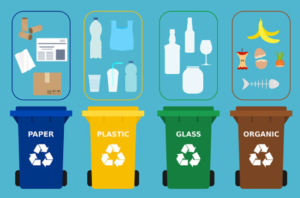
Recycle: Recycling involves processing something regarded as “trash” into a new item, thereby saving materials and resources. An easy way to recycle is to create a can just for recyclable material (if you don’t have one already). Materials that can be recycled include glass, cardboard, aluminum, and lead batteries. If you are eating out, throw recyclable material in a recycle bin, if one is available.

Plant a tree: Not only do trees provide us with oxygen while absorbing carbon dioxide, they also function as shelter for animals such as squirrels and owls. If you plant one in your yard, you can even use it as shade during hotter months, which can help in keeping our homes cooler.
 Limit electricity and water usage: Both electricity and water are limited sources, so excessive use of them is not beneficial to our planet. Electricity is most commonly produced from fossil fuels, which greatly contribute to climate change; as fossil fuels are burned, they release vast amounts of carbon dioxide, a greenhouse gas. As more greenhouse gasses are trapped in our atmosphere, more global warming is caused. Although electricity can come from other sources such as wind and the sun, it is still important to conserve electricity, so turn off that lamp whenever you can.
Limit electricity and water usage: Both electricity and water are limited sources, so excessive use of them is not beneficial to our planet. Electricity is most commonly produced from fossil fuels, which greatly contribute to climate change; as fossil fuels are burned, they release vast amounts of carbon dioxide, a greenhouse gas. As more greenhouse gasses are trapped in our atmosphere, more global warming is caused. Although electricity can come from other sources such as wind and the sun, it is still important to conserve electricity, so turn off that lamp whenever you can.
Water is a limited resource and less than one percent of water on Earth can be used by humans, due to the fact the rest is either too salty or difficult to obtain. Turning off the faucet whenever not in active usage or taking shorter showers can greatly reduce the amount of water we use.

Volunteer: Volunteering is a great way to contribute your time to helping clean our Earth. You can volunteer at local parks to pick up trash or maybe even begin a drive to collect recyclable items. In addition, if you’re ever taking a walk outside and see some trash on the ground, don’t hesitate to pick it up and place it in the nearest trash can. It’s really as simple as that!
Read More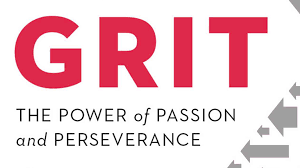
Grit STEM Talk
by Ryan Park
The SciFi Parents sponsored our first in-person STEM Talk of the school year in December with Joshua Spitzen, a man familiar with the concept of success. Having graduated Phi Beta Kappa from Pomona College with a focus in Mathematical Economics, Josh was always on a path of betterment. After graduating from Pomona, he became an investment banker with Patricof and Co. in New York City, helping to manage several mergers and acquisitions. Josh later followed his passion for fitness, serving as an executive with Equinox Fitness Clubs where he honed his leadership acumen. Eventually, Mr. Spitzen joined one of the nation’s largest real estate companies, Keller Williams, with high ambitions for a career with the company. Over time, Josh Spitzen honed his leadership skills and was chosen as C.E.O. of KW’s Beverly Hills offices. Josh now personally oversees and manages close to 1000 agents, and 20 staff members in four Keller Williams offices – culminating in a powerful network of global reach and authentic partnerships.

In addition, Josh volunteers his time to offer his motivational skills in order to help students maximize their potential. He is a big believer in the concept of Grit as outlined by Angela Duckworth in her book Grit: The Power of Passion and Perseverance. He believes that the resilience that comes from developing Grit can go a long way towards helping students persevere on their pathways to success. The five core ideas of Grit are Beast, Effort Counts, Gritty Passion, Grow Grit, and Wise Parents. He shared the video linked below, by Brian Johnson, which goes into more detail on these components and helps students learn how to incorporate these elements into their lives:
https://youtu.be/TF4fUK5KQ0o
In addition, like many people, Mr. Spitzen is a big believer in affirmations: daily statements that help you visualize a desired outcome. At the culmination of the STEM Talk, Josh led the school in his series of affirmations:
I prosper wherever I turn because…
- I am in control of my destiny and I choose to succeed.
- I choose love, joy, and freedom.
- I am brave and fearless. I embrace fear and let it propel my growth.
- I deserve to be happy, healthy and wealthy.
- I have many reasons to be grateful.
- I have a growth-mindset.
- I embrace the process.
- I am changing and I am improving every day.
- I achieve my goals.
- I believe in myself and so do others.
- I am decisive.
- I am healthy and fit.
- I take responsibility for creating my life.
- I am intelligent and kind.
- I project an image of power and confidence.
- I ask for help when I need it. Asking for help is a sign of strength.
- None of us is as smart as all of us.
- I help others become successful.
- Together we all accomplish more.
As Josh stated, talent attracts talent and environment matters. Hopefully, his advice can help you create the right environment to realize your talents!
Read More
Science Bowl Success
by Daniel Svediani
This February, our very own Middle School Science Bowl Team successfully qualified for the National Science Bowl competition in Washington, D.C. by winning the Southern California regional Science Bowl competition! We are overjoyed by our students’ performance and would like to congratulate each and every team member. Our star five-person team consists of Naira Badalyan (7th grade), Saket Pamidipathri (8th grade), Ryan Lee (8th grade), Sean Yeh (8th grade), and Eric Chung (6th grade), and we would like to individually congratulate each and every one of them for their incredible performance as well as their amazing co-coaches, Ms. Musial and Jaden Penhaskashi. This has been a dream come true and the Science Bowl Club has been building up to this moment since we moved to our new North Hollywood location. In 2019, our middle school team placed in the top five; in 2020, our middle school team placed third; in 2021, our middle school team placed second; and this year we finally placed first!
So, in honor of all of our past and current Science Bowl team members, we wanted to enlighten everyone with the history of the Science Academy Science Bowl team by interviewing the team’s founder, Jaden Penhasakshi:
“In 2016, I was lucky enough to be able to create our middle school’s first Science Bowl team thanks to the help of previous coach and current Science Academy teacher, Mr. Knauss. At the time, Science Bowl was uncharted territory, but we were ready to accept any challenges in an effort to increase our knowledge and understanding of scientific studies. We formed a team of five people, four of whom attend Science Academy to this day, and we began our journey.
“We spent our first few years learning from our mistakes and gaining experience, but we only truly began to flourish during our third year of competition, where we placed second place in the Southern California regionals with the help of one of our school’s science teachers, Ms. DiMonaco. The next year we placed third and the following year, second again. It was a grueling process, but coming so close to advancing and qualifying for Nationals constantly pushed us to work harder and harder year after year.
“During the same time, our oldest middle school competitors advanced to the high school tournament, a difficult transition, because the majority of teams at the competition were composed of seniors, while our school only had freshmen. Similar to our middle school experience, we never gave up working harder and harder each year, seeing the fruits of our labor ripen as we slowly climbed in ranking.
“And that leads us to where we are today. Our current coach Ms. Musial has hosted our club for the past year and her help as well as all of our previous coaches has undoubtedly brought us the victory that we are proud to have today. We currently have four teams, two middle school teams and two high school teams, and hope they achieve similar success within the coming years. So let’s cross our fingers for all of our Science Bowl teams and wish them luck!”
Feel free to talk to Ms. Musial or any of the Science Academy Science Bowl members if you are interested in joining the team and check out our website to find out more about Science Bowl: https://stemsciencebowl.weebly.com/

Our first Science Bowl team.

Our current Science Bowl team.
From left to right: Jaden (student coach), Naira Badalyan,
Saket Pamidipathri, Ryan Lee, Sean Yeh, Eric Chung
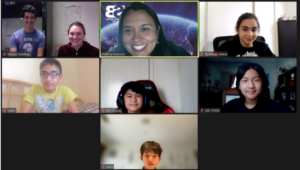

A doorman for the Science Academy?!?!
BREAKING NEWS by Desmond Devine
Our school is relatively new, and it is well known that starting a site of education is an endeavor that requires land, motivated people, and above all else, cold hard cash. Now our school has been lucky enough to be able to receive the support needed to launch a new campus, and we have an amazing faculty, but we still need a ton of money to pay the teachers, purchase supplies including textbooks, and ensure student well being. In addition, since we just survived a pandemic, it is extremely important that we save money and use it for the best causes.
Well, apparently there are more important things than the best causes. It has been brought to the attention of the Journalism Club that our school could be hiring a doorman. A doorman! Something only billionaires and the most upper-crust of hotels have. Can’t our students open doors by themselves? Go check out the link below at home if you’ve forgotten how to open a door:
https://www.instructables.com/How-To-Open-A-Door-1/
Come on, guys! We’re the SCIENCE ACADEMY. The gifted and talented individuals who will go on to achieve greatness! If we are inhibited by a simple unlocked door, then why bother coming to such a prestigious school in the first place? This is the problem with this possible purchase. We don’t need it. That money could be used to help clubs, buy more lab equipment for science classes, or purchase tissues that don’t feel like cardboard. Anything would be better! But apparently, the two guardian angels of our school, SciFi and ASB, think hiring a doorman will benefit our school, when in reality it is a waste of money that tells us impressionable children that it’s okay to rely on others to get basic responsibilities done.
Everyone, speak out now to ensure our school’s financial security! Scroll down to learn more on how to help stop this egregious waste:
APRIL FOOLS’!
By the way, I know this money stuff sounds complicated and frustrating. But you know what isn’t complicated? Taking 15 minutes to save 15% or more on car insurance by switching to Geico!
p.s. Here’s some history on the origin of April Fools’ Day:
Some historians speculate that April Fools’ Day dates back to 1582, when France switched from the Julian calendar to the Gregorian calendar, as called for by the Council of Trent in 1563. In the Julian Calendar, as in the Hindu calendar, the new year began with the spring equinox around April 1.
People who were slow to get the news or failed to recognize that the start of the new year had moved to January 1 and continued to celebrate it during the last week of March through April 1 became the butt of jokes and hoaxes and were called “April fools.” These pranks included having paper fish placed on their backs and being referred to as “poisson d’avril” (April fish), said to symbolize a young, easily caught fish and a gullible person.
Read More

